Top 10 Peshawar Famous Places: Historic Sights and Landmarks
ZAHA-HOMES | 2/27/2025 | 7 min read

Peshawar is not just a city; it’s a time place where history, culture, and traditions come alive. Every street, market, and monument has a story to tell stories of emperors, travelers, traders, and warriors who once walked these very paths. If you want to experience this city's charm, exploring Peshawar’s famous places is a must.
From breathtaking mosques and ancient forts to vibrant bazaars. Peshawar offers an unforgettable journey through time. So, if you like history or enjoy discovering new places, this guide will take you through the best Peshawar tourist places and help you find its hidden treasures.
Best 10 Must-Visit Peshawar Famous Places
After careful consideration, we have curated a list of Peshawar tourist attractions that you must not miss:
1. Sethi House: A Timeless Treasure
Right in the heart of Peshawar’s Old City, Sethi House is a beautiful reminder of the city's rich past. Built in 1884 by the wealthy Sethi family, this mansion is a perfect blend of Central Asian and Mughal architecture.
As soon as you step inside, you will catch the sight of the intricate wooden carvings, colorful stained-glass windows, and underground rooms. This one of the most Peshawar beautiful places tells the story of an era when trade flourished between South and Central Asia.

2. Mahabat Khan Mosque: A Mughal-Era Masterpiece
Located in an old city, Mahabat Khan Mosque is a breathtaking sight. Built in the 17th century during the Mughal era, it features tall white marble minarets and beautifully painted frescoes.
If you want a truly magical experience, visit during sunrise or sunset. And if you’re lucky, you might even get access to the rooftop, which offers a stunning bird’s-eye view of the city.
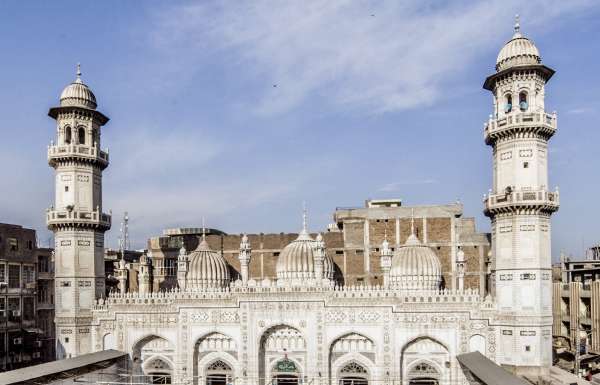
3. Peshawar Museum: A Window to Ancient Civilizations
For history enthusiasts, the Peshawar Museum is an absolute treasure. Built in 1907, it houses one of the largest collections of Gandhara Buddhist art in the world.
Walking through its halls, you’ll come across ancient Buddhist sculptures, rare Mughal artifacts, and pre-Islamic coins. Each exhibit takes you deeper into the city's past, making it one of the best places to visit in Peshawar.
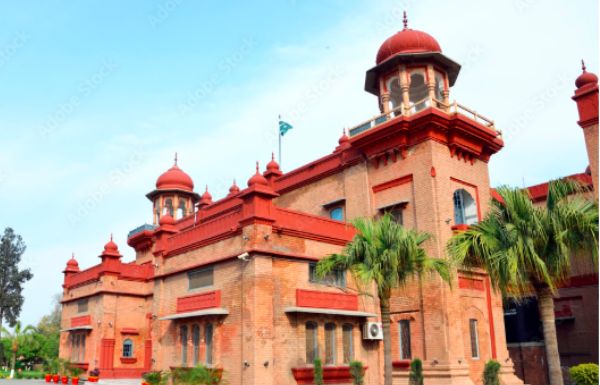
4. Bab-e-Khyber: The Historic Gateway
Standing tall at the entrance of the Khyber Pass, Bab-e-Khyber is more than just a monument, it’s a symbol of power and resilience.
For centuries, this gateway has welcomed traders and conquerors traveling between South Asia and Central Asia. Visiting this landmark will make you feel like a part of history, standing at the crossroads of countless civilizations.
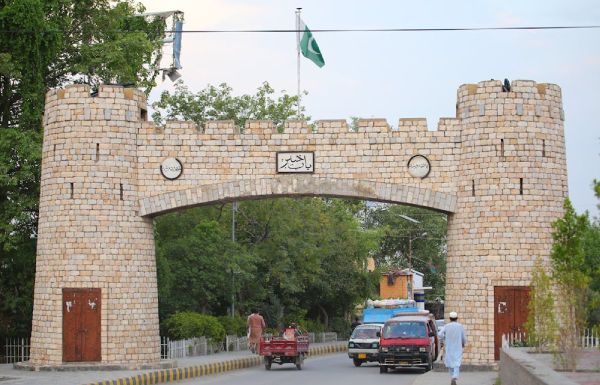
5. Qissa Khwani Bazaar: The Market of Storytellers
If there’s one place in Peshawar that truly captures its soul, it’s Qissa Khwani Bazaar. Known as the "Bazaar of Storytellers," this market was once a gathering place for traders who shared tales from their travels.
Today, it’s the perfect place to soak in Peshawar’s vibrant atmosphere. While you’re here, don’t forget to sip on a cup of Peshawari kahwa (green tea) and try the legendary chapli kebabs.
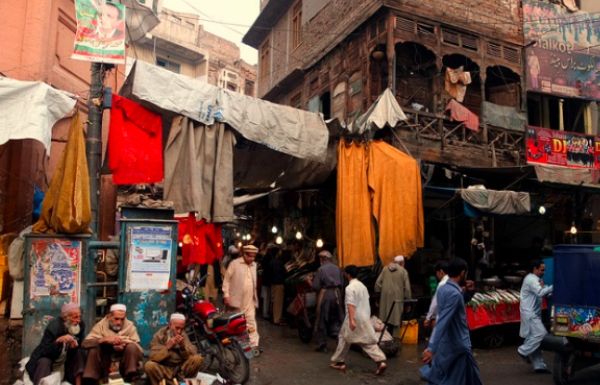
6. Jamrud Fort: The Silent Guardian
Jamrud Fort, built in 1837 by Sikh general Hari Singh Nalwa, is a place full of stories. Although visitors aren’t allowed inside, you can still admire its majestic walls from a distance.
Located near Bab-e-Khyber, this fort was a key stronghold during the British and Sikh eras. If you're exploring the area, this historical gem is worth a stop.
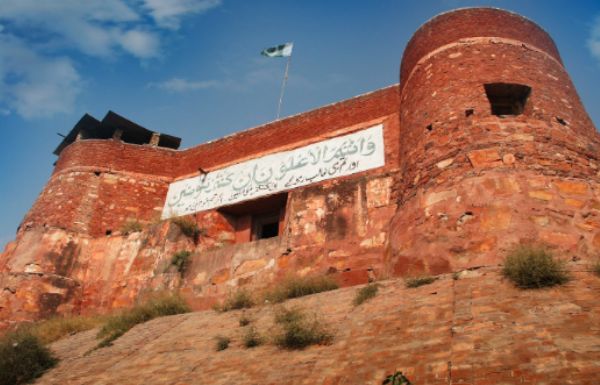
7. Shahi Bagh: The Royal Garden
Need a break from the city’s busy streets? Shahi Bagh is the perfect escape. This stunning 100-acre garden, built during the Mughal era, was once a royal gathering place.
Even today, it’s a favorite spot for families and students who come here to relax, take a walk, or enjoy the fresh air. If you want to experience the peaceful side of Peshawar, this is the place to be.

8. Bala Hisar Fort: The Crown of Peshawar
Perched on a hill, Bala Hisar Fort has been watching over Peshawar for centuries. Built by Mughal Emperor Babur, it was later strengthened by the Sikhs and today serves as the headquarters of the Frontier Corps.
Although you can’t enter without special permission, the majestic exterior alone is worth seeing. Standing before this historic fortress, you’ll feel the weight of centuries of power and conquest.
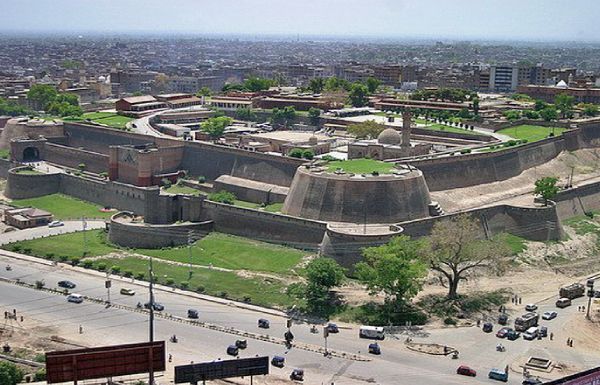
9. Wazir Bagh: A Historical Garden
Wazir Bagh, one of the most beautiful places in Peshawar was established in 1810 by Sardar Fateh Mohammad Khan during the reign of Durrani Prince Shah Mahmood Durrani and stands as a testament to the region's rich history.
Initially designed with four enclosures, this historical garden once boasted apricots, peaches, pomegranates, pears, and multicolored flowers. Sadly, due to a lack of maintenance over the years, the garden's beauty has diminished.
However, recent restoration efforts, funded by the KPK government in 2020, aim to revive Wazir Bagh to its former glory. The restoration is part of a larger initiative under the Peshawar Revival Strategy to preserve the city's historical landmarks.

10. Gor Khatri: A Hidden Historical Gem
Gor Khatri is one of the most underrated historical places in Peshawar. Over the centuries, it has been a Buddhist monastery, a Mughal caravanserai, and even a Hindu religious site.
Recent excavations here have uncovered artifacts over 2,000 years old, proving that this city has been a thriving center of civilization for millennia.
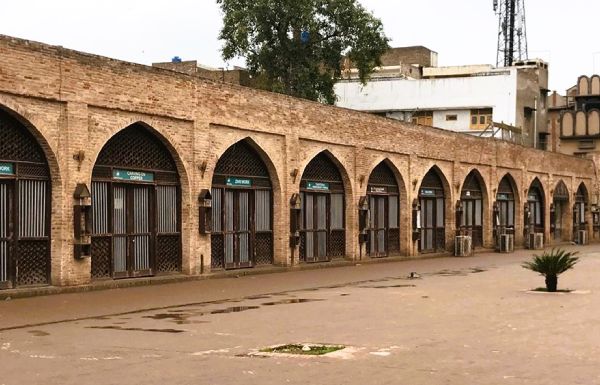
Other Notable Best Places to Visit in Peshawar
Chowk Yadgar: A Place to Remember
Chowk Yadgar is a busy square in the center of this ancient city, built to remember the people who sacrificed during the British era. The monument here honors those brave souls. It's an important landmark in the city, showing the strength and history of the people.
Sphola Stupa: A Piece of Ancient History
The Sphola Stupa is an old Buddhist site near Peshawar. Though it is mostly in ruins now, it was once an important religious place. Visiting the stupa lets you step back in time to learn about the region's ancient culture and religion.
All Saints Church: A Church with History
All Saints Church was built in 1855 and shows a mix of European and local styles. With its tall spires and colorful glass windows, it stands as a calm place for people to pray. It’s a beautiful building with a lot of history, offering a peaceful atmosphere in the busy city.
Sir Cunningham Clock Tower: A Colonial-Era Icon
Built in 1900 by the British, Sir Cunningham Clock Tower (also called Ghanta Ghar) is one of the city’s most recognizable landmarks.
It serves as a reminder of Peshawar’s colonial past and its transition into modern times. If you’re exploring the city center, stop by for a quick photo and a glimpse into history.
Personal Recommendations & Travel Tips
Best time to visit: Spring (March-May) and autumn (September-November) offer the best weather. Summers can be extremely hot.
Safety tips: This city is generally safe, but it’s best to stick to well-known areas and respect local customs.
Local transportation: Use rickshaws, taxis, or Careem/Uber for easy travel. Walking is best for Old City areas.
Is Peshawar the Oldest City in Asia?
Peshawar is one of the oldest cities in Asia, with a history that stretches back over 4,000 years. It has witnessed the rise and fall of many significant civilizations, including Alexander the Great's conquest, the rule of the Hindu Shahis, the Kushans, the Mughals, the Sikhs, and finally, the British.
This rich history has shaped the city into a cultural and historical hub. Though other Asian cities also boast ancient origins, this city stands out for its continuous and diverse historical legacy.
Historical Facts & Legends
Old name of Peshawar in Urdu: Peshawar was once called “Purushapura” or “پرش پورہ,” meaning City of Men, during the Gandhara civilization.
Qissa Khwani Bazaar Massacre: In 1930, British forces fired on peaceful protesters, killing hundreds.
The Mughal Connection: Emperor Babur frequently visited this one of the oldest cities and mentioned it in his memoirs, the Baburnama.
Conclusion
Peshawar isn’t just a city it’s a living museum. From its ancient forts to its lively bazaars, every corner has a story to tell. Either you’re a history enthusiast, a food lover, or a curious traveler, these Peshawar famous places will leave you in awe.
FAQs: Peshawar Famous Places
Q: Which thing is famous in Peshawar?
Peshawar is famous for its rich history, vibrant bazaars, and delicious food like chapli kebabs.
Q: What is special about Peshawar?
Peshawar is special for its cultural heritage, historical sites, and role as a major trade center.
Q: Which street is famous in Peshawar?
Khyber Bazaar is the most famous street in Peshawar, known for its lively market and historic significance.

Best Places to Visit in Swat for Tourists, Families and Friends

Top National Parks of Pakistan to Explore in 2025